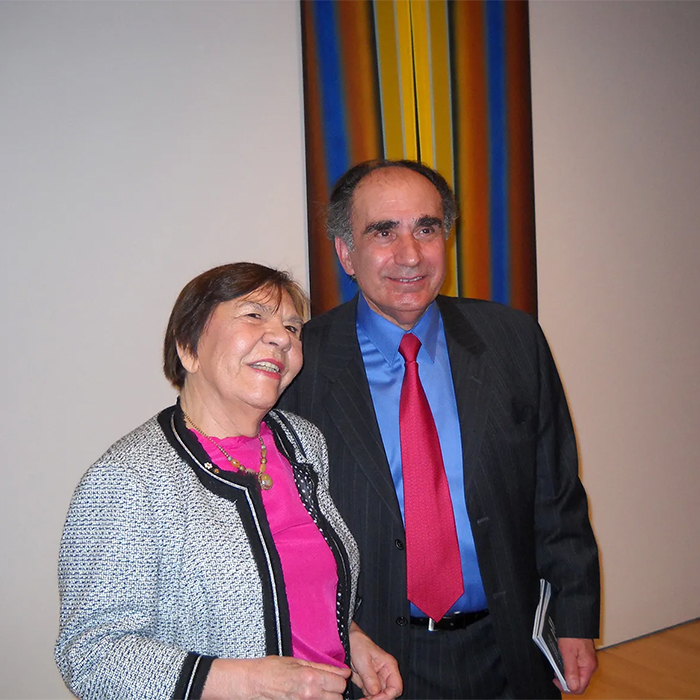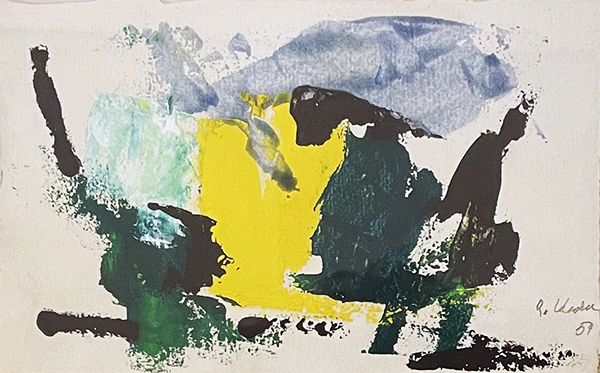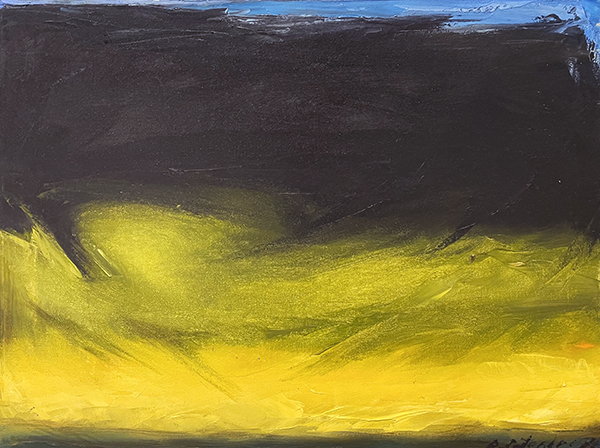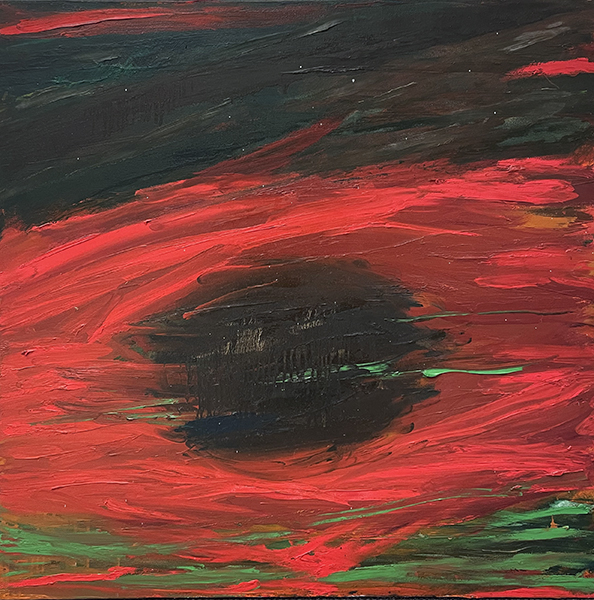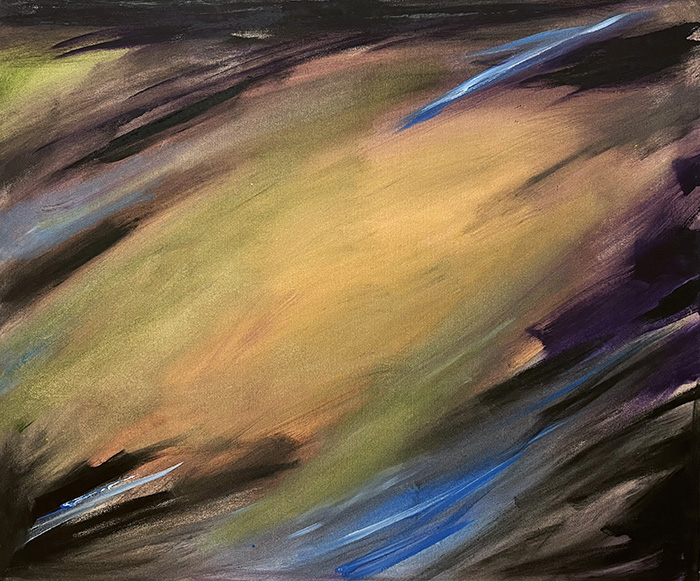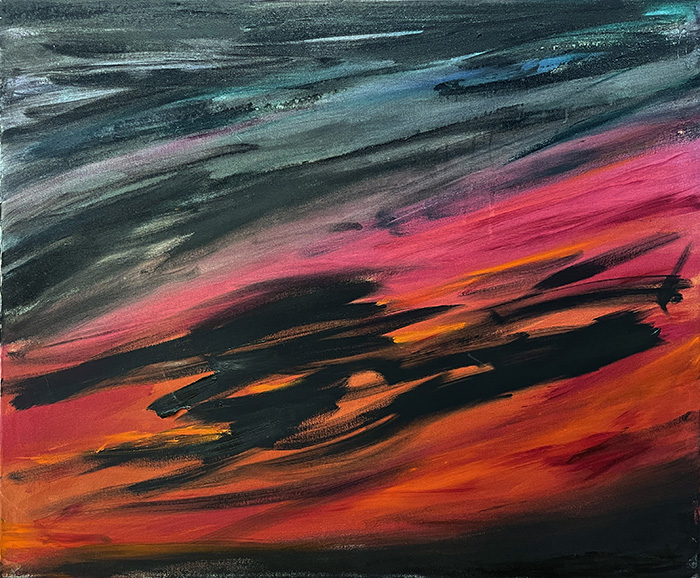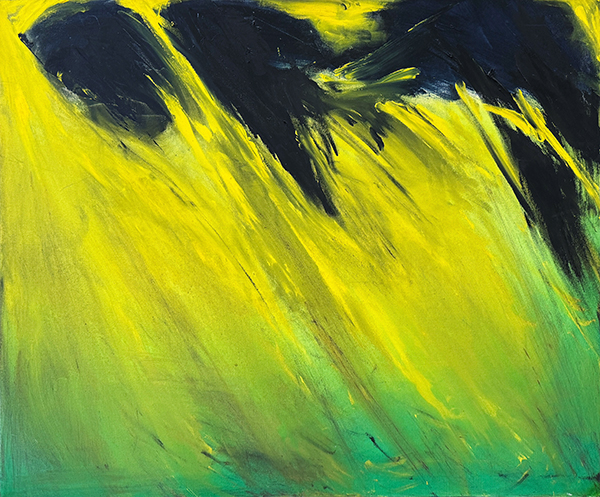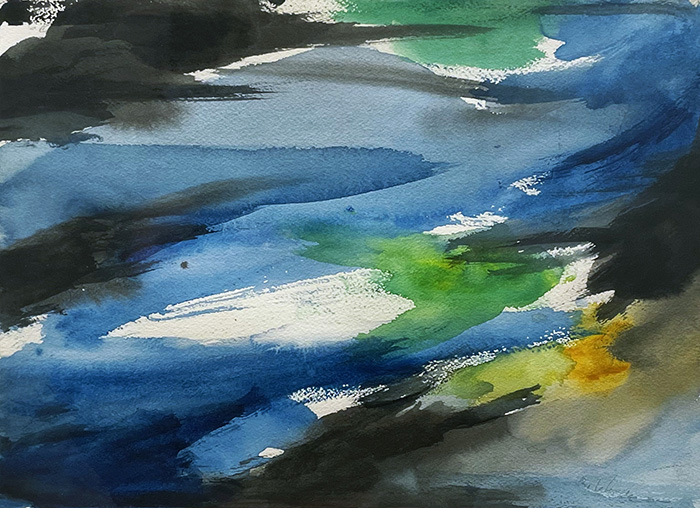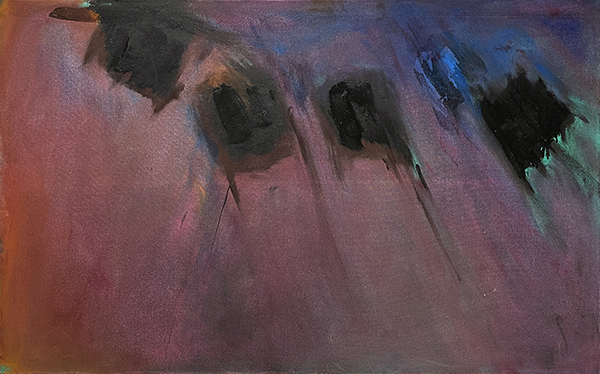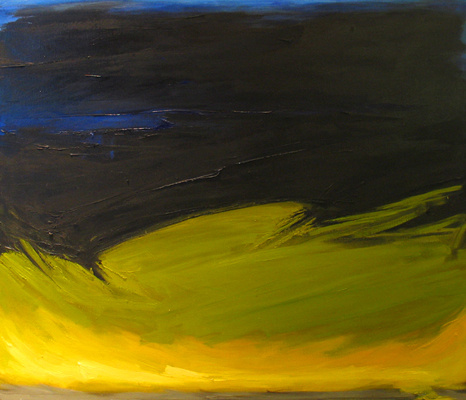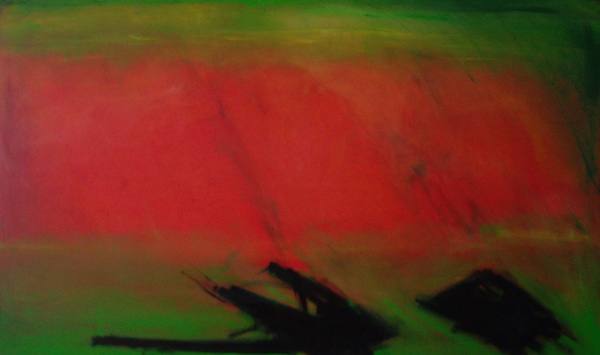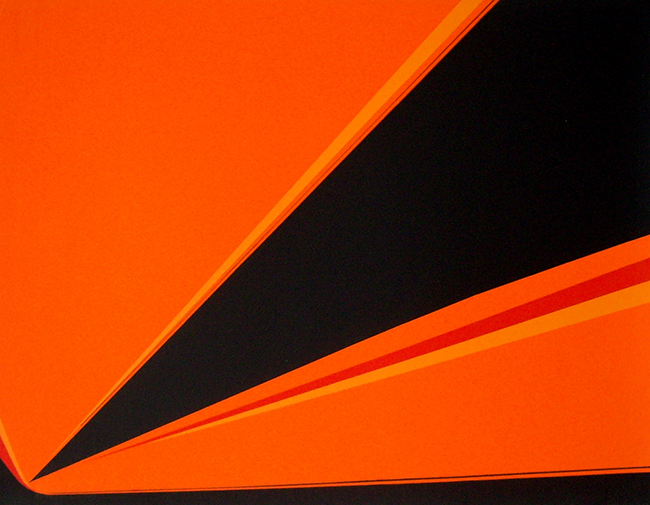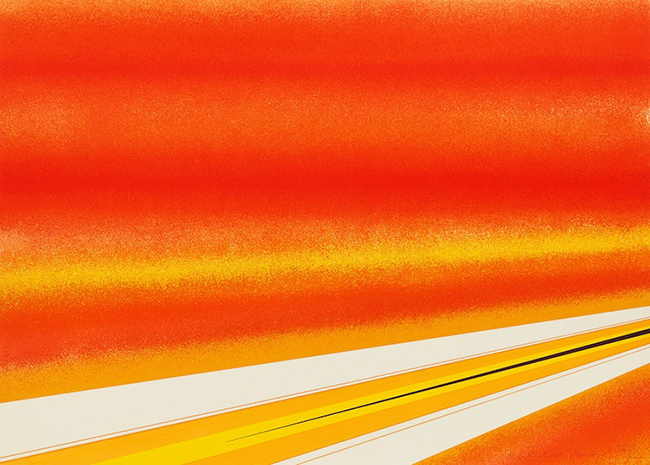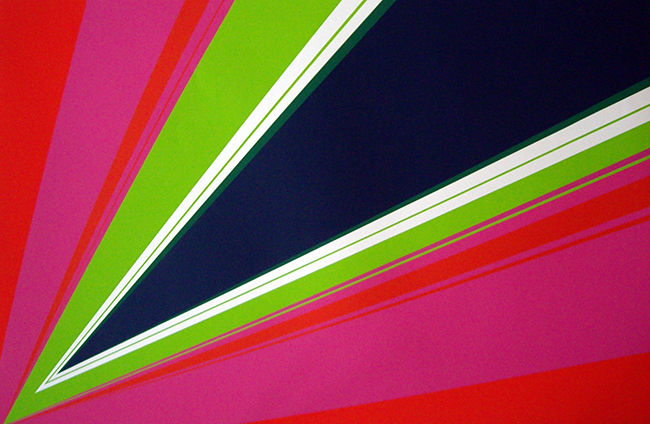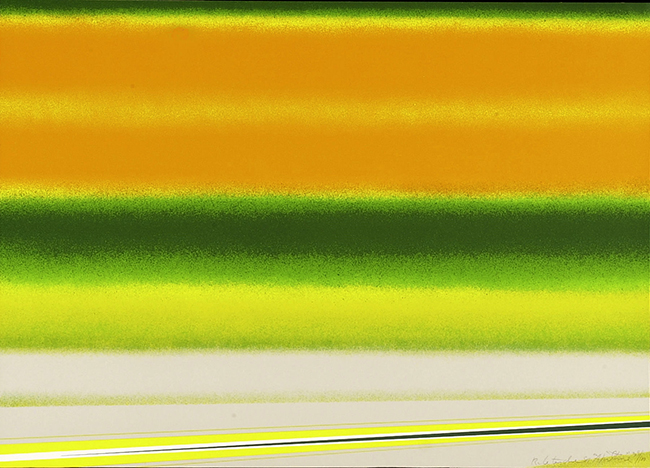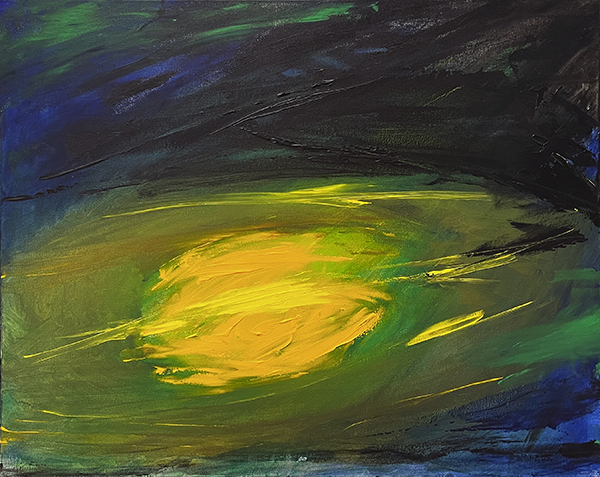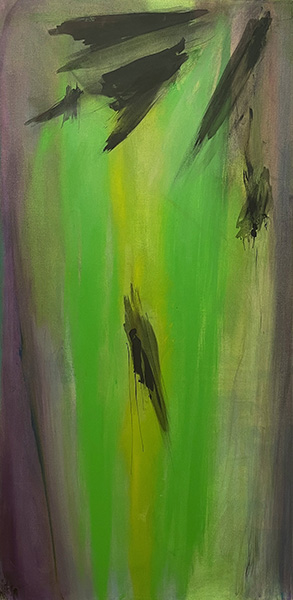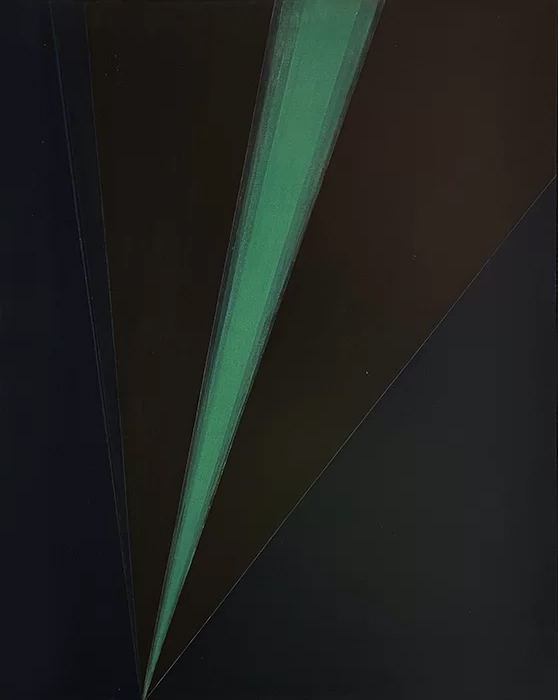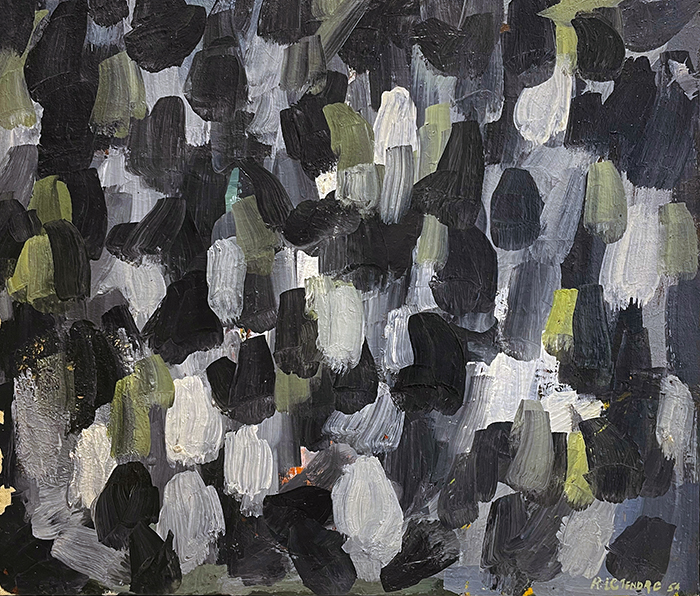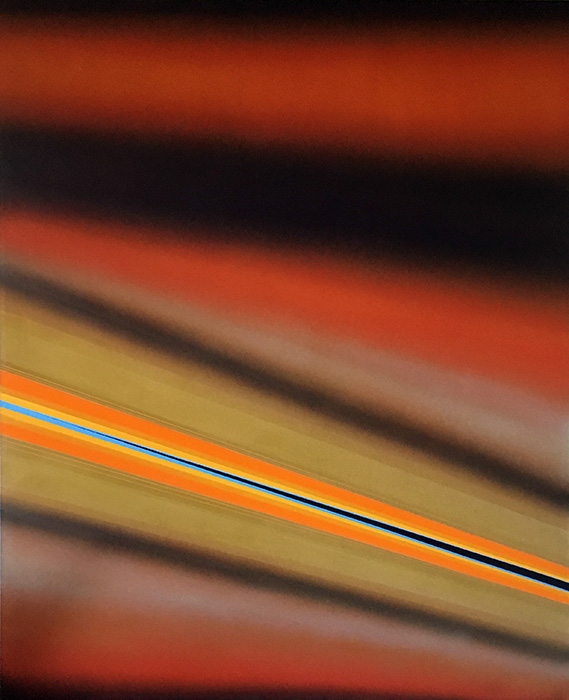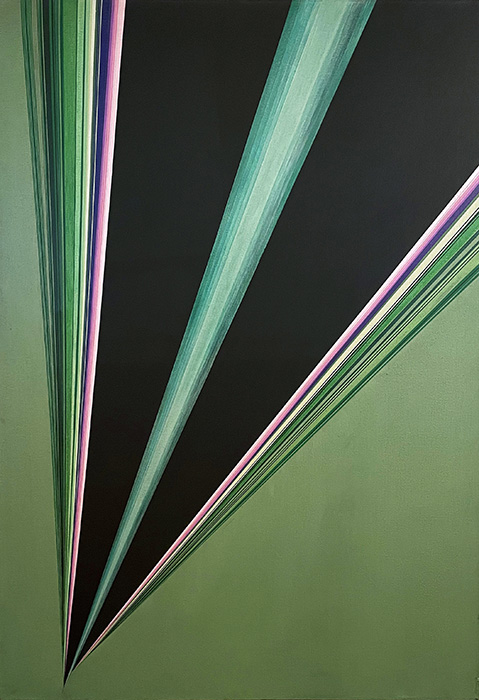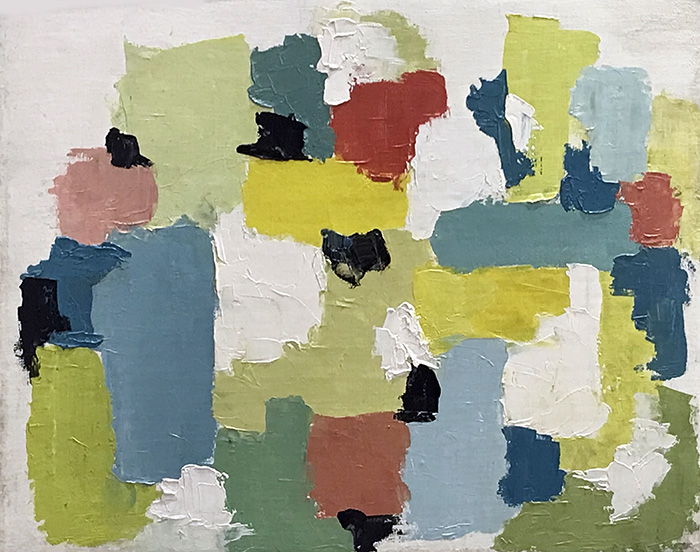Rita Letendre
Rita Letendre (1928-2021) - Biography
Born in Drummondville Quebec in 1928, Rita Letendre moved to Montreal in 1942 with her parents and six siblings and cultivated her childhood passion for drawing into one of the longest and most illustrious artistic careers in Canada. After a brief period spent studying at l’École des beaux arts in 1948, Letendre discovered a circle of artists known as the Automatistes who were experimenting with colour and form in a way that resonated deeply with her. These artists drew on life’s intensities and, like the young fiery Letendre, were determined to make their unique mark on the world. Letendre remained committed to their spirit of free expression and spontaneity of abstraction throughout her life. She would go on to rigorously experiment with space, movement, and tension working with oils, pastels, acrylics, palette knife, and eventually the airbrush, which she began using in 1971. Her intense and vibrant colour field paintings are composed of densely applied gestural strokes, evoking raw states of emotion and restlessness, which became a trademark.
Another defining moment came when she met her future husband, Kosso Eloul, on a trip to Spoleto Italy in 1962. Eloul was a Russian born Israeli sculptor and together they would work and travel the world, their union one of harmony, love and respect. Both Letendre and Eloul had tremendous energy and derived tremendous inspiration from one another. When they weren’t creating art, they were entertaining hundreds of guests in the townhouse they shared on Sherbourne Street in Toronto – a place that emanated warmth and hummed with life.
Letendre would go on to play a significant role in the history of public art in Toronto, where she was commissioned to create many large-scale public projects, including major murals at Ryerson University and Royal Bank Plaza. She was also commissioned to design a huge coloured skylight for the ceiling of Glencairn (TTC) subway station in Toronto entitled "Joy"; which was eventually removed at Letendre’s request because the panels had faded after being exposed to many years of sunlight. However, "Joy" was reengineered and reinstalled in Glencarin Station in 2014 and cast a warm, orange glow over commuters to this day. At the time, Letendre was often the only woman artist considered for – and awarded – such major commissions, and her involvement in public art was unprecedented. As major infrastructure developed throughout the 1970s, Letendre’s work continued to be featured in subway stations, universities, and offices buildings across the city. At one point, Letendre had as many as 12 public works on view, her most famous being Sunrise, a mural of 60 by 60 feet installed on the outside wall of the Neill-Wycik Building on Gerrard Street, and which has since been recreated in all its original glory at the Evergreen Brickworks in summer 2021. Letendre’s very first large-scale public work, a 24 by 21-foot mural titled Sunforce created for the University of California at Long Beach in 1965, has also recently been restored to its original state in honour of the artist.
At Gallery Gevik’s 90th birthday celebration for the Artist, Wanda Nanibush, Curator Indigenous Art at the Art Gallery of Ontario, summed up the artist when she remarked that Rita Letendre “paints fire and light in a way we’ve never seen before. [Throughout her life,] she was always thinking, feeling and experiencing light both spiritually and in terms of the canvas. I learned this from being in front her work. Her paintings open up our hearts and souls to what life can be, and that makes us want to live better, more passionately and stronger. This is what Rita Letendre has brought to us through her work and who she was as a person."
Selected Exhibitions:
1974 Rita Letendre : Palm Springs Desert Museum, Palm Springs, California
1989 Rita Letendre : the Montréal years, 1953-1963: Les années montréalaises, 1953-1963, Concordia Art Gallery, Montreal
2001 Rita Letendre : Les Elements - The Elements, Galerie Simon Blais, Montreal
2003 Rita Letendre : aux couleurs du jour, Musée national des beaux-arts du Québec
2005 Rita Letendre: Beginnings in Abstraction, Robert McLaughlin Gallery, Oshawa, ON
2013 Rita Letendre, Gallery Gevik, Toronto
2017 Rita Letendre: Fire & Light, Art Gallery of Ontario, Toronto
2021 Rita Letendre: Lines of Strength, Musée du Bas-Saint-Laurent, Rivière-du-Loup
2022 Rita Letendre: Eternal Space, Carolyn Campagna Kleefeld Contemporary Art Museum in California State University Long Beach in conjunction with the completion of restoration on Letendre's 1965 mural Sunforce.
Selected Awards:
1959 – Premier Prix, Concours de la Jeune Peinture
1960 - Prix Rodolphe-de-Repentigny
1961 - Prix de la Peinture, Province du Québec
1962 - Gold Medal, Piccola Europa Exhibition, Sassoferrato, Italy
1970 - Ile Festival International de Peinture, Cagnes-sur-Mer, France (Prix National)
2002 - Officer of l'Ordre National du Québec
2005 - Officer of the Order of Canada
2010 - Creation of prix hommage Rita-Letendre de la ville de Drummondville
2010 - Governor General's Award in Visual and Media Arts
2010 – Honoris Causa Ph D – University of Montreal
2012 – Recipient of the Queen Elizabeth II Diamond Jubilee Medal
2016 – Member of the Order of Ontario
2016 - Paul-Émile-Borduas Award, a distinction reserved for the very finest and most significant contributors to the art of Québec
2019 - Invited Artist for the Eiteljorg Museum's Annual Fellowship
Major Collections:
Letendre's paintings can be found in numerous major public collections including the National Gallery of Canada, the Art Gallery of Ontario, the Montreal Museum of Fine Arts, the Musée du Quebec and the Vancouver Art Gallery.
Artist Specialization - Abstract Expressionism & Geometric Colour Field Painting - Letendre has said that her work is grounded in metaphors of light, darkness and movement in an ongoing commitment to the process of discovery of the self. Her early paintings used vibrant oils defined in loose patterns of repeated geometric shapes to suggest a sense of movement. Increasingly her work exhibited more space and tension, indicating a greater commitment to form, shifting from the abstract Automatiste style to the more ordered, geometric mode of the Plasticiens. Colour fields are broken apart and expanded, while a reduced range of pigmentation creates a feeling of intensity. The surfaces became more compelling with densely applied gestural strokes that evoke raw states of emotion, restlessness and energy. It has been suggested that these changes may have been prompted by the artist’s growing interest in her Indigenous heritage. "What I want to express is life. I want to understand life and try to project it to others. Nchala [I hope]"– Rita Letendre
